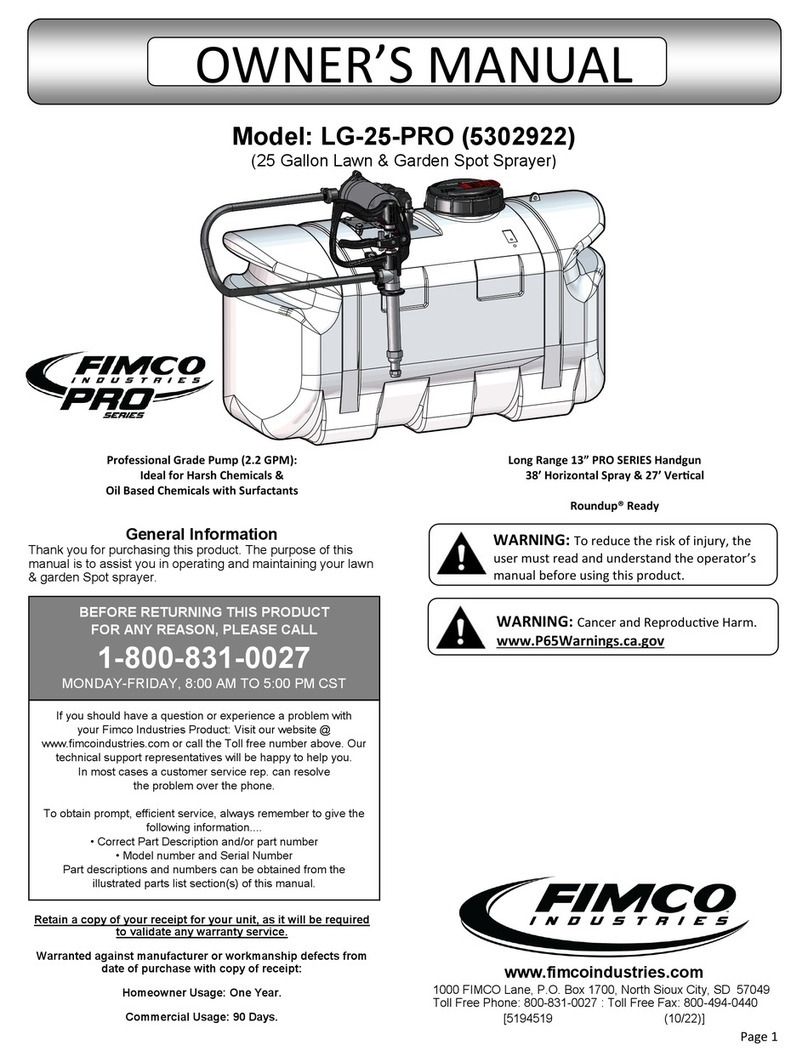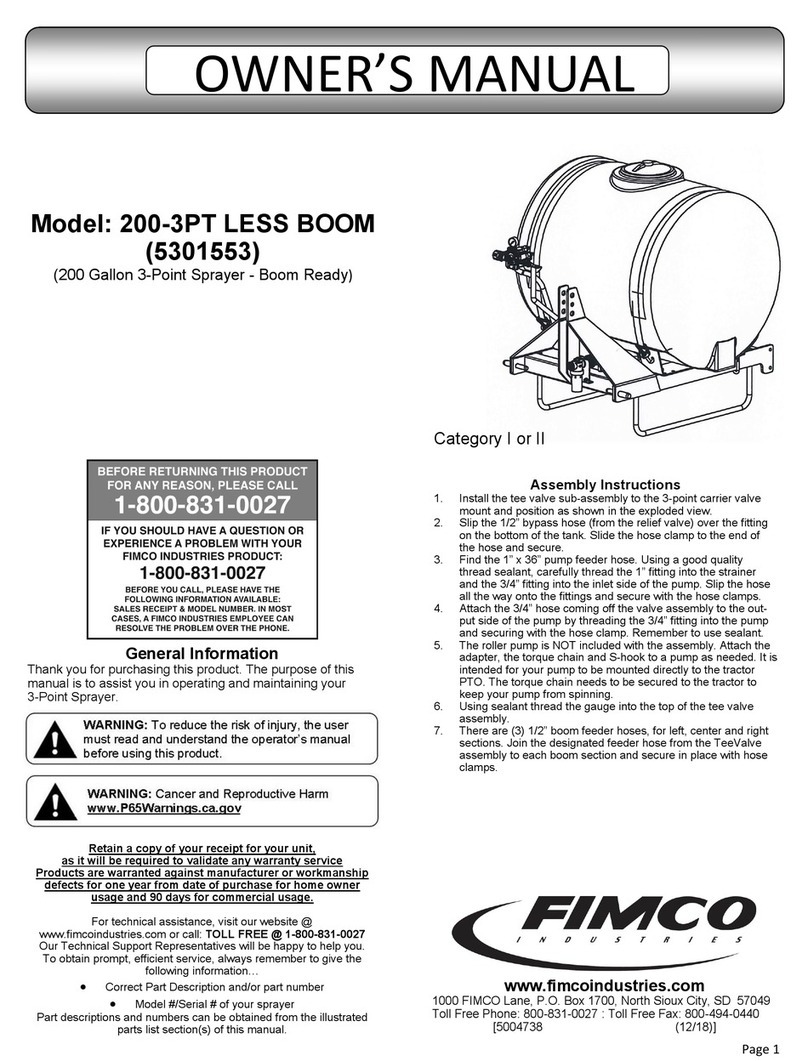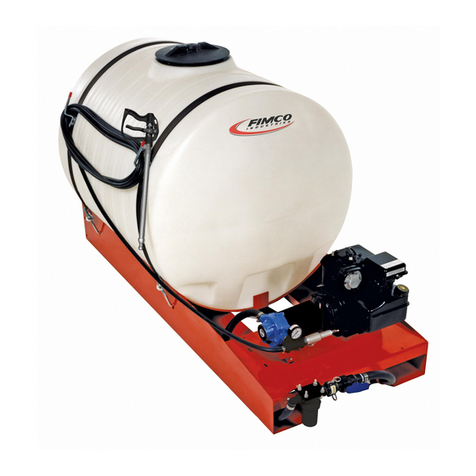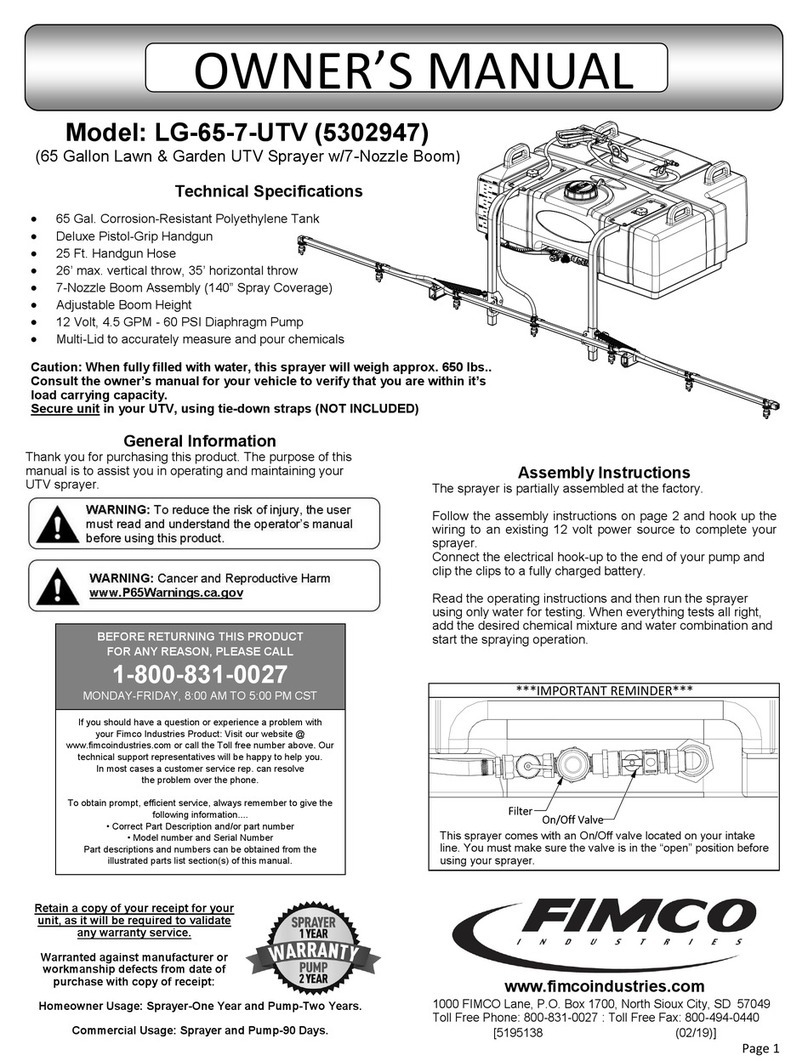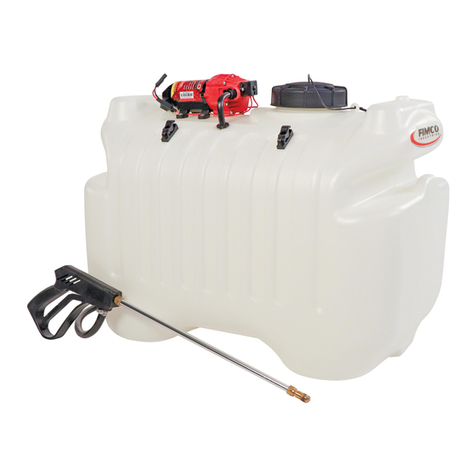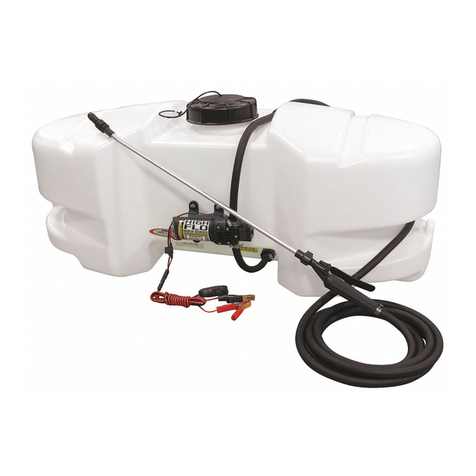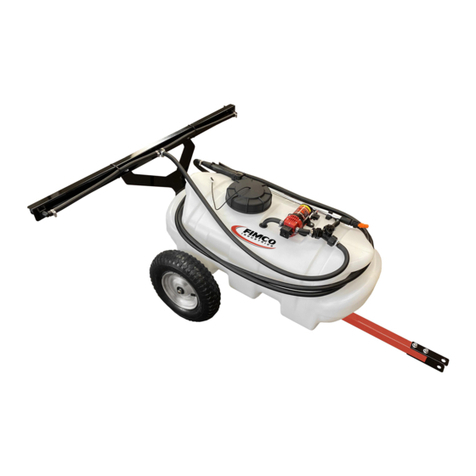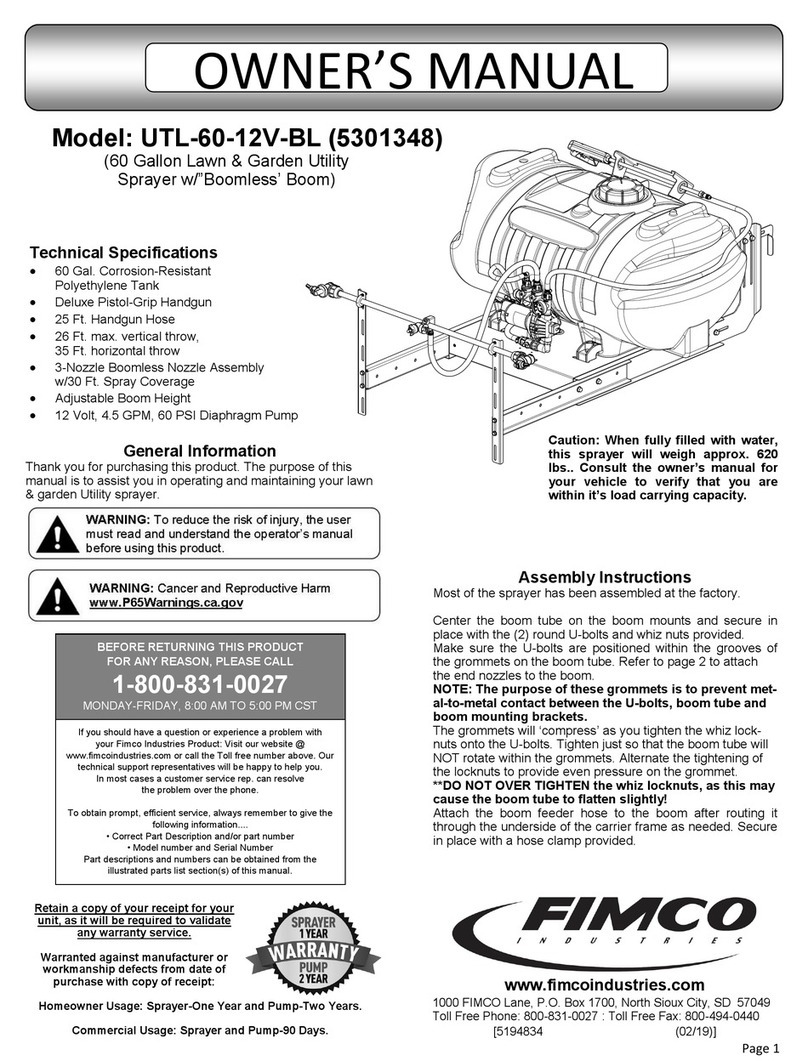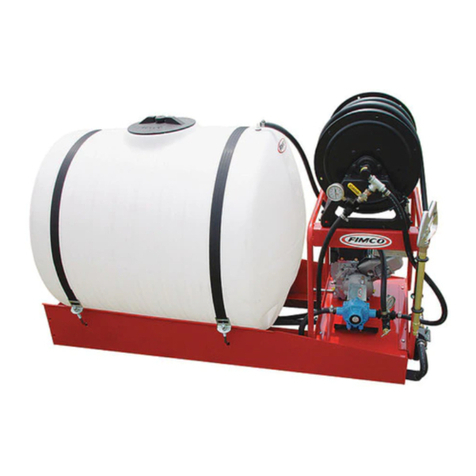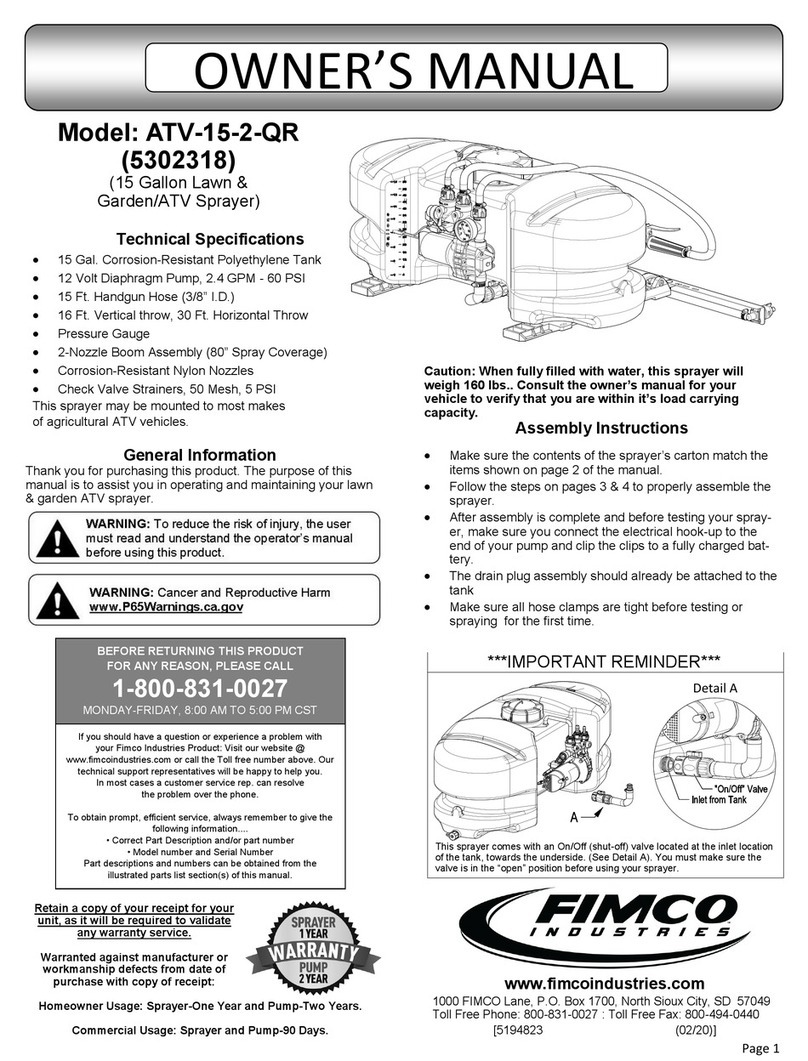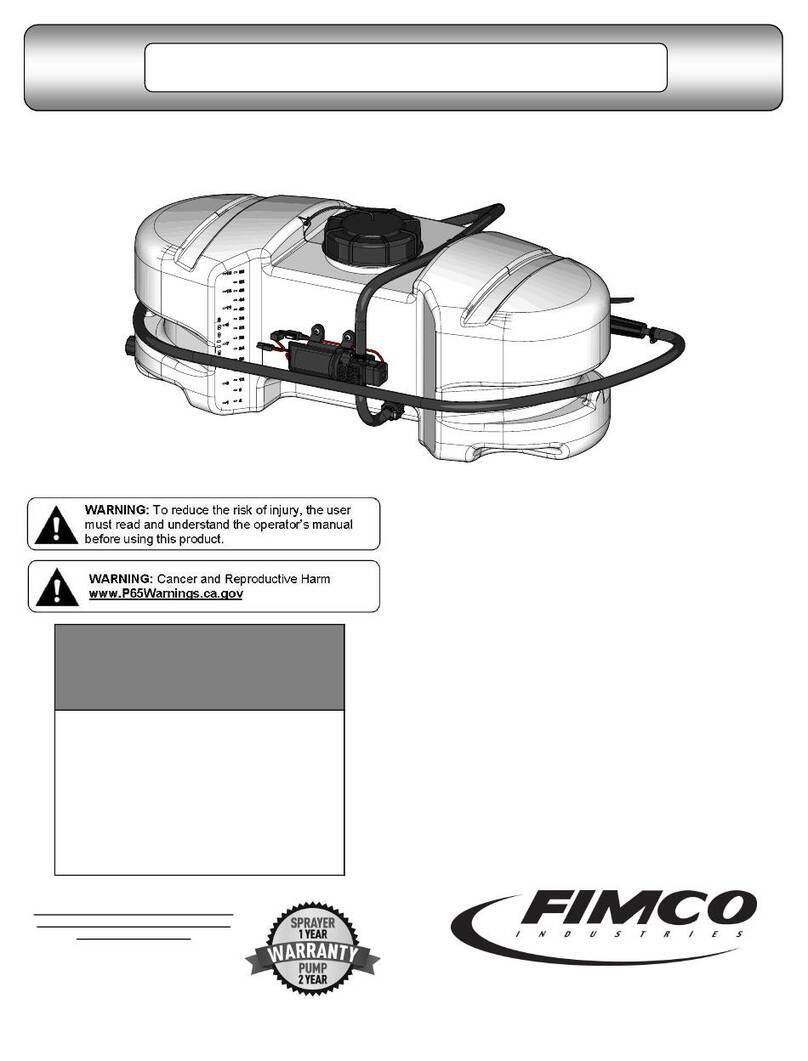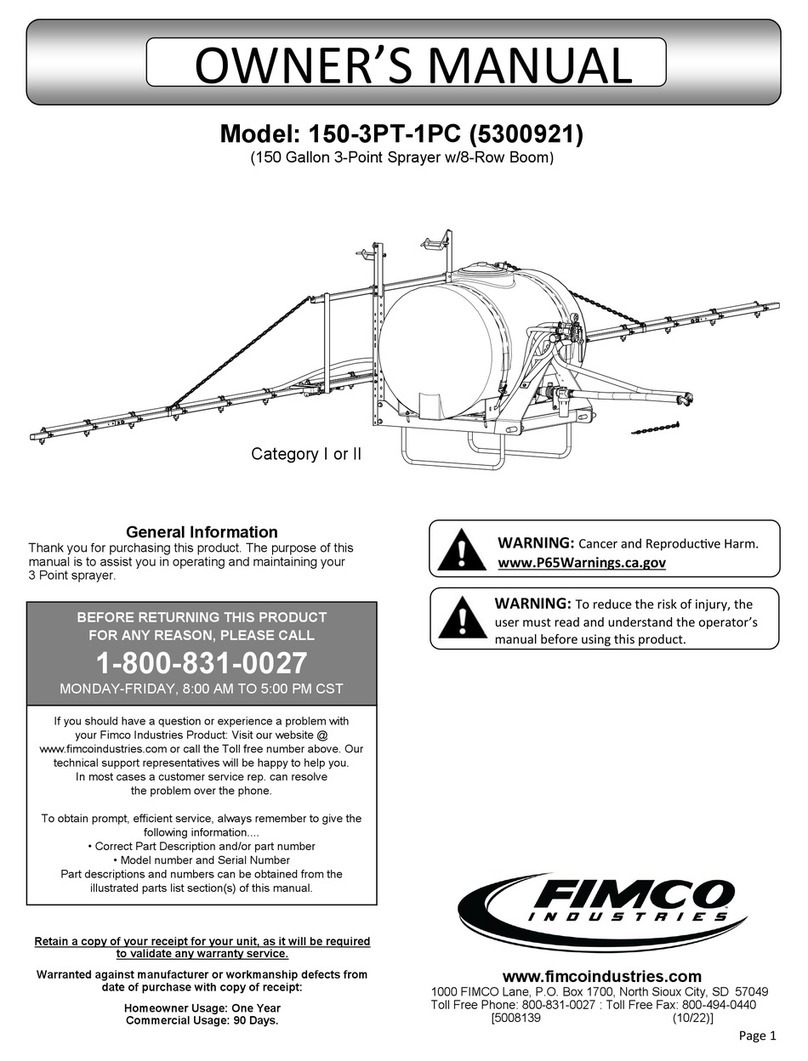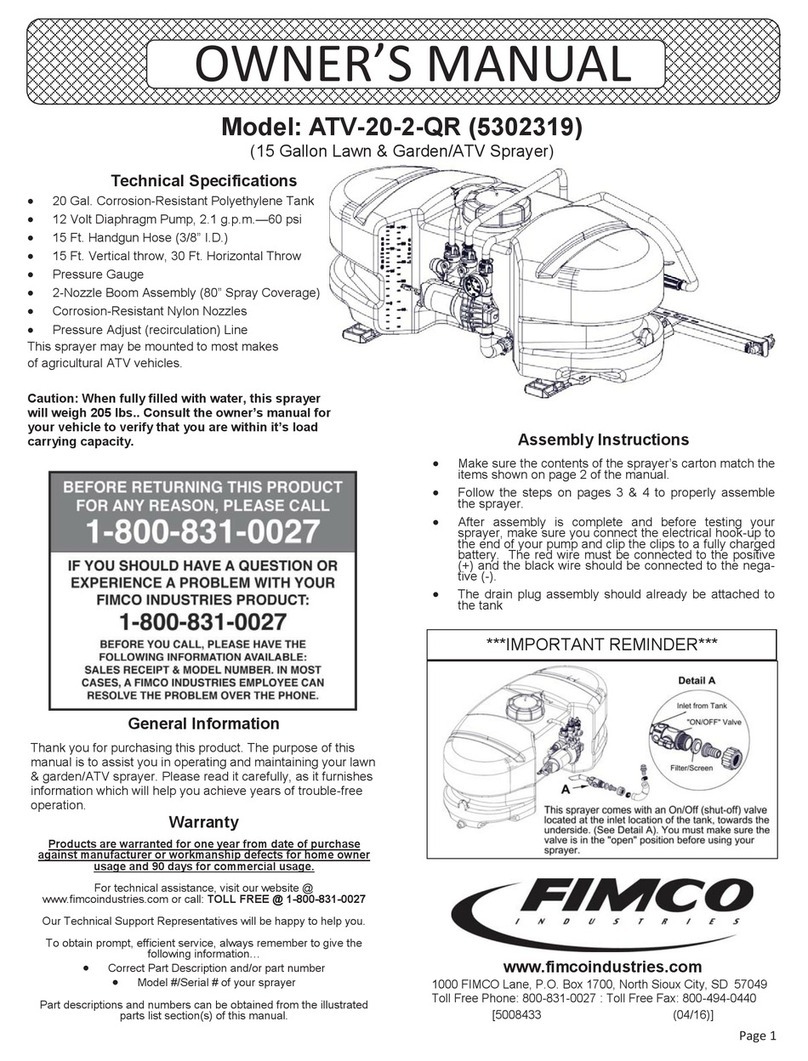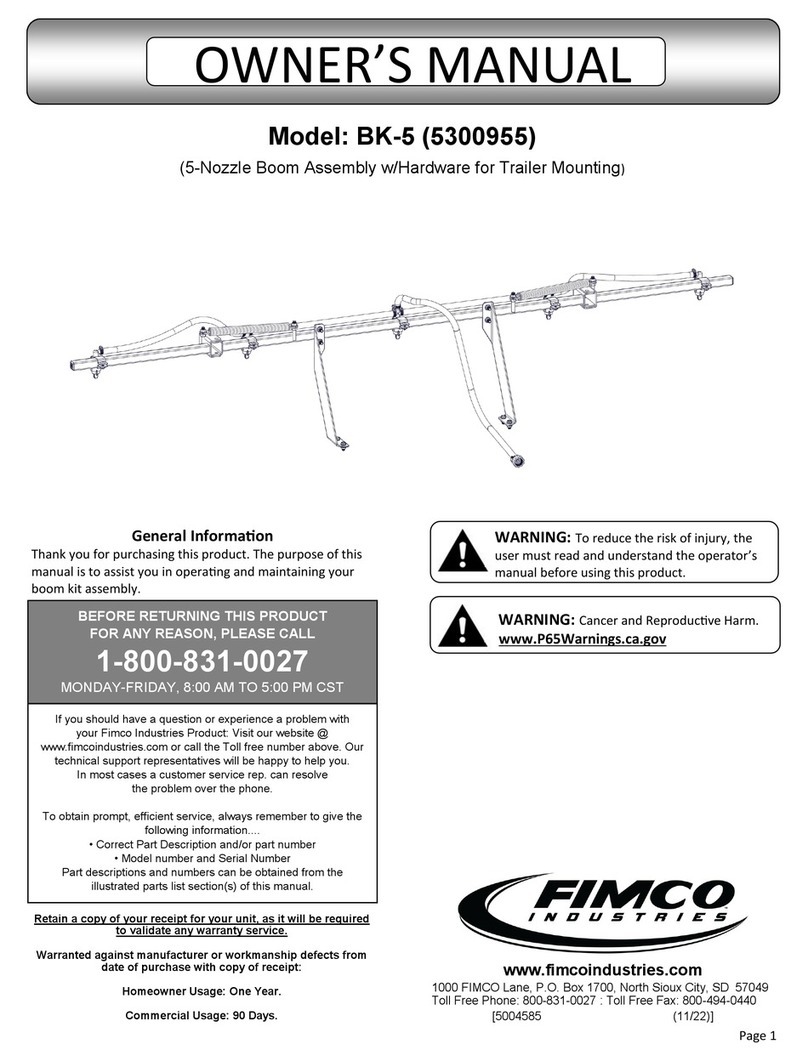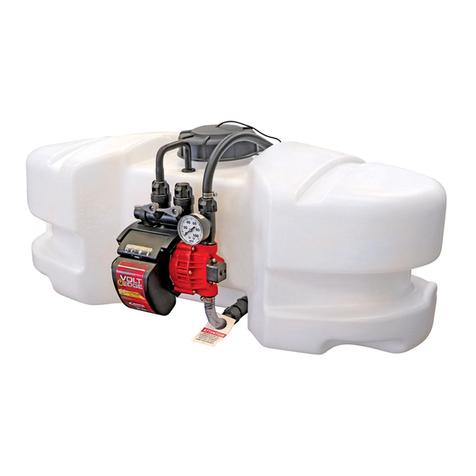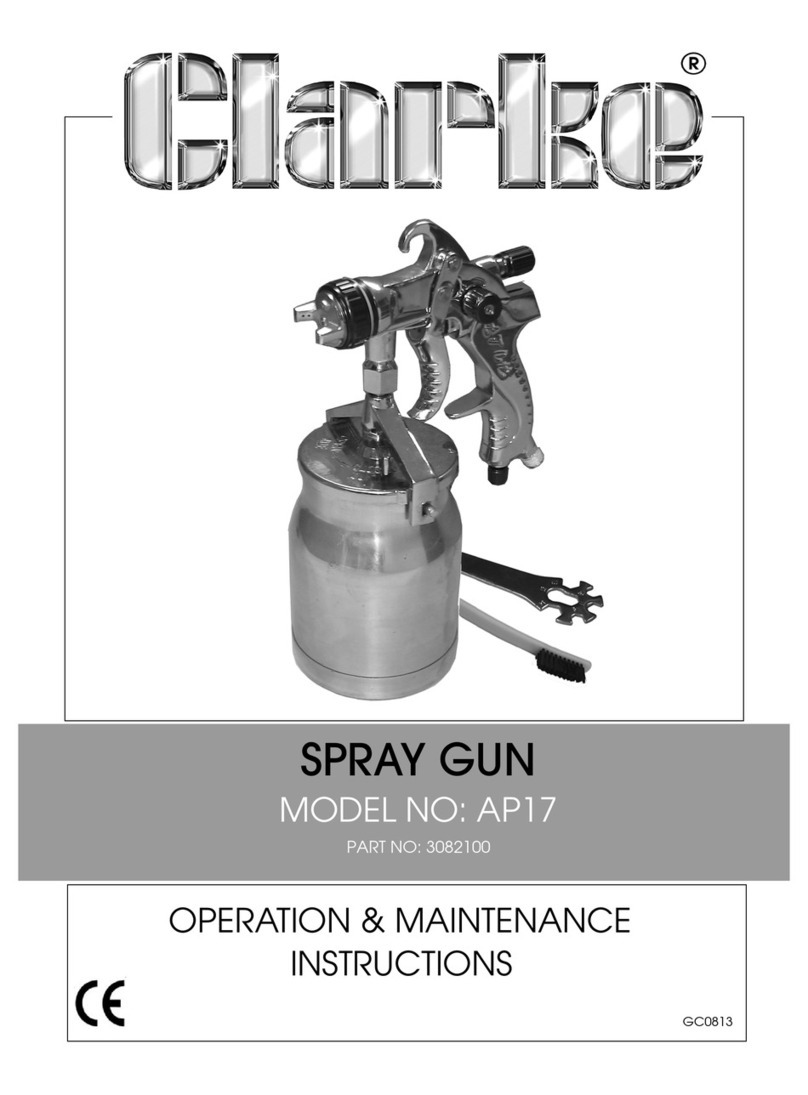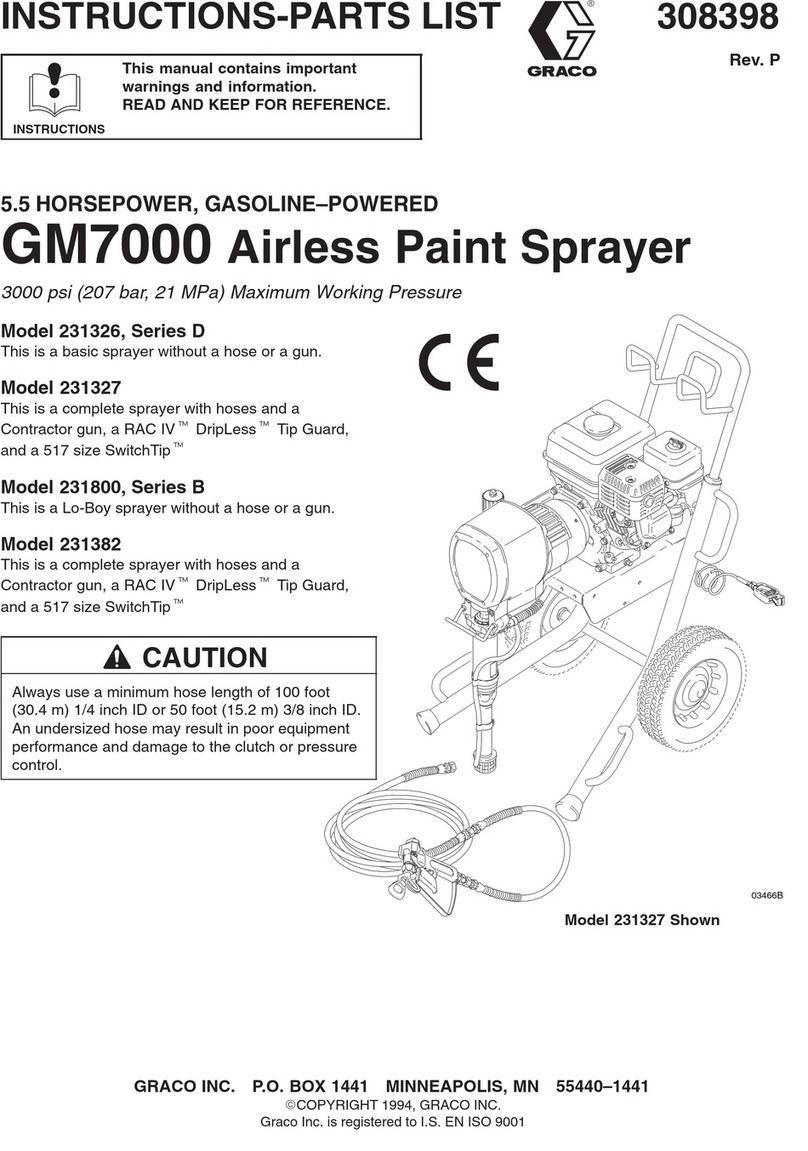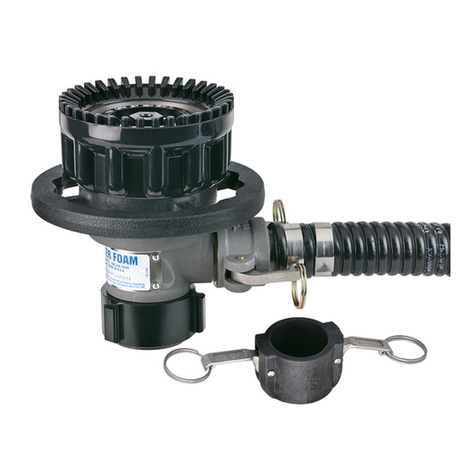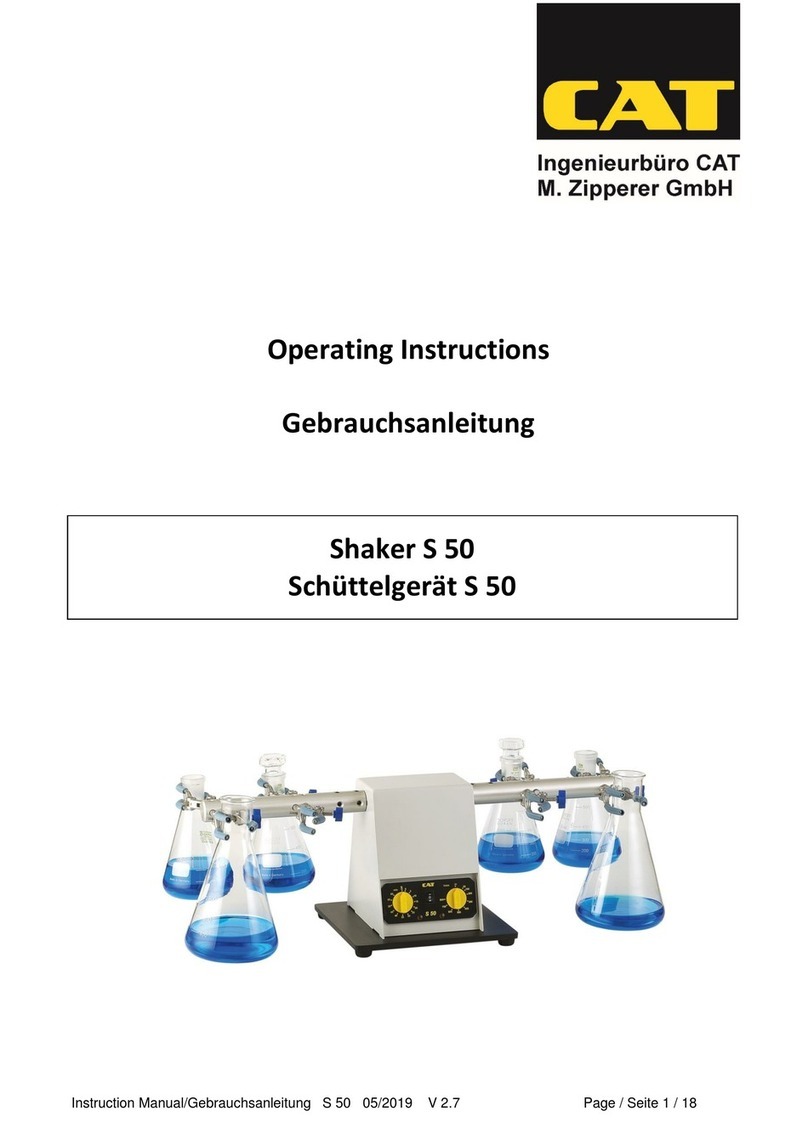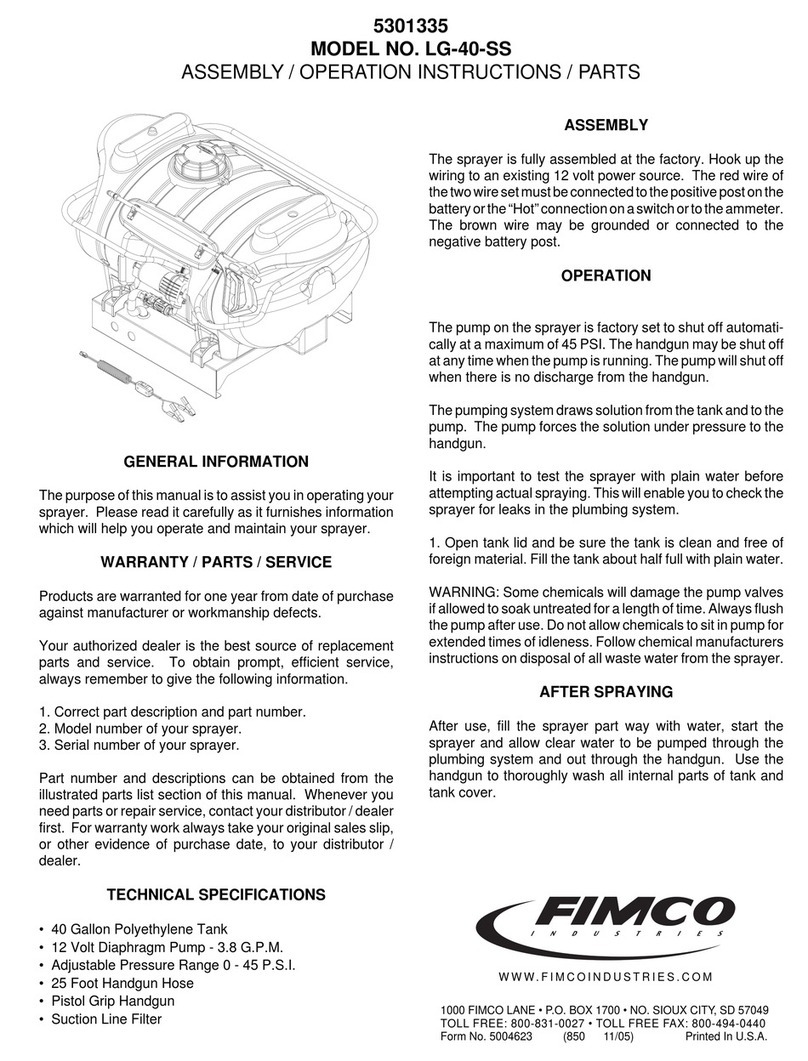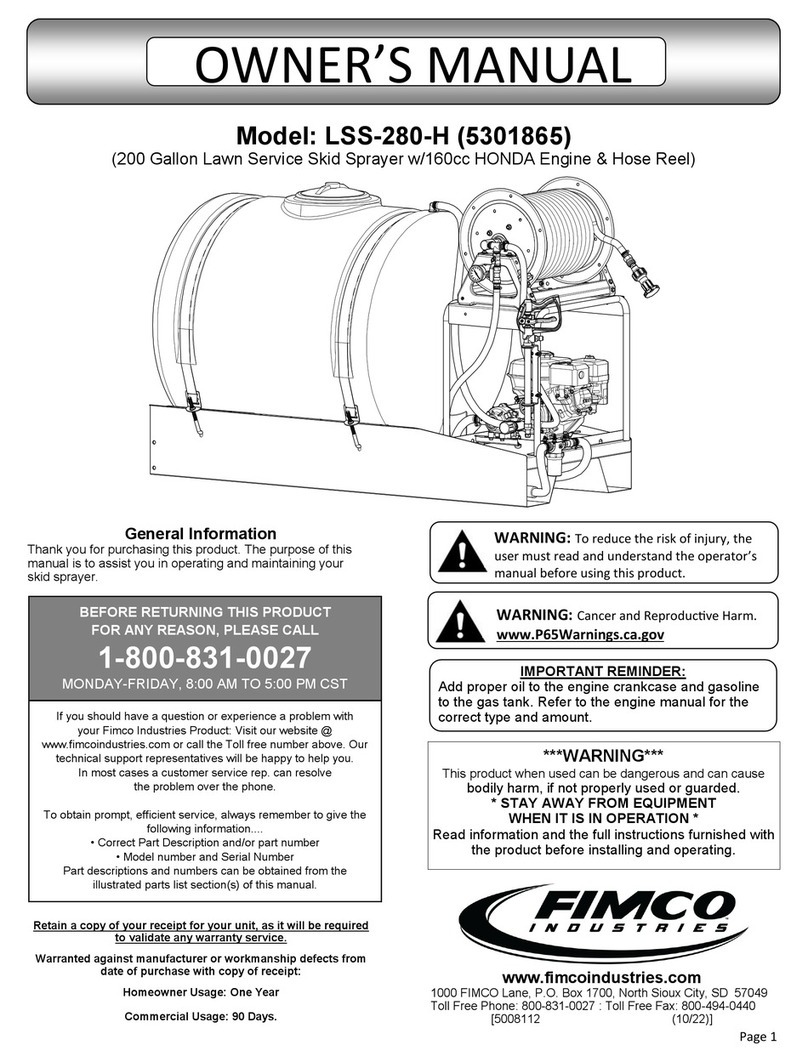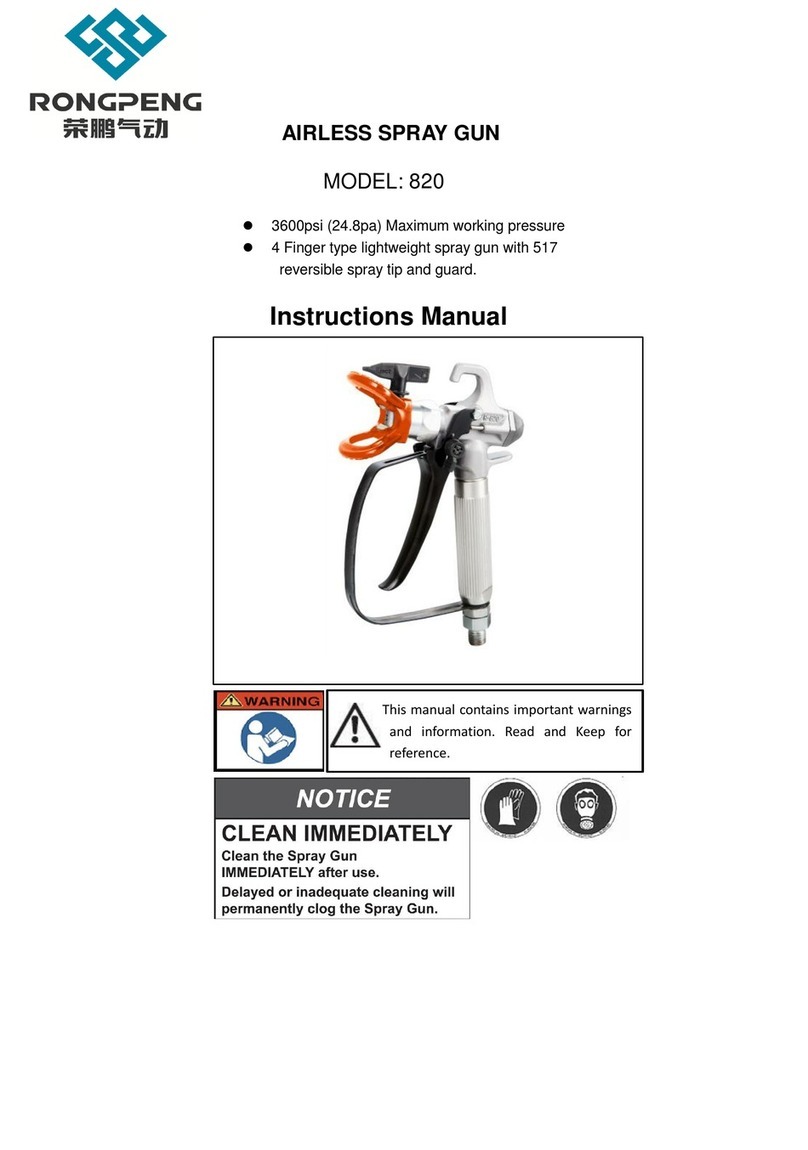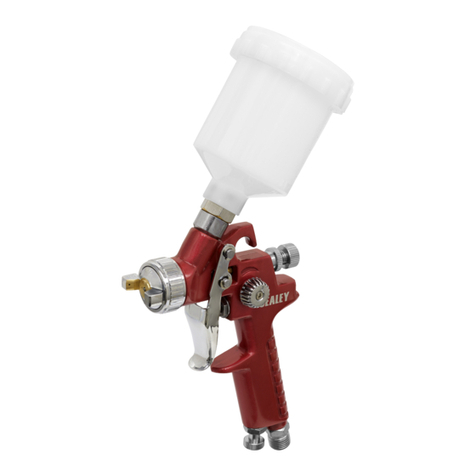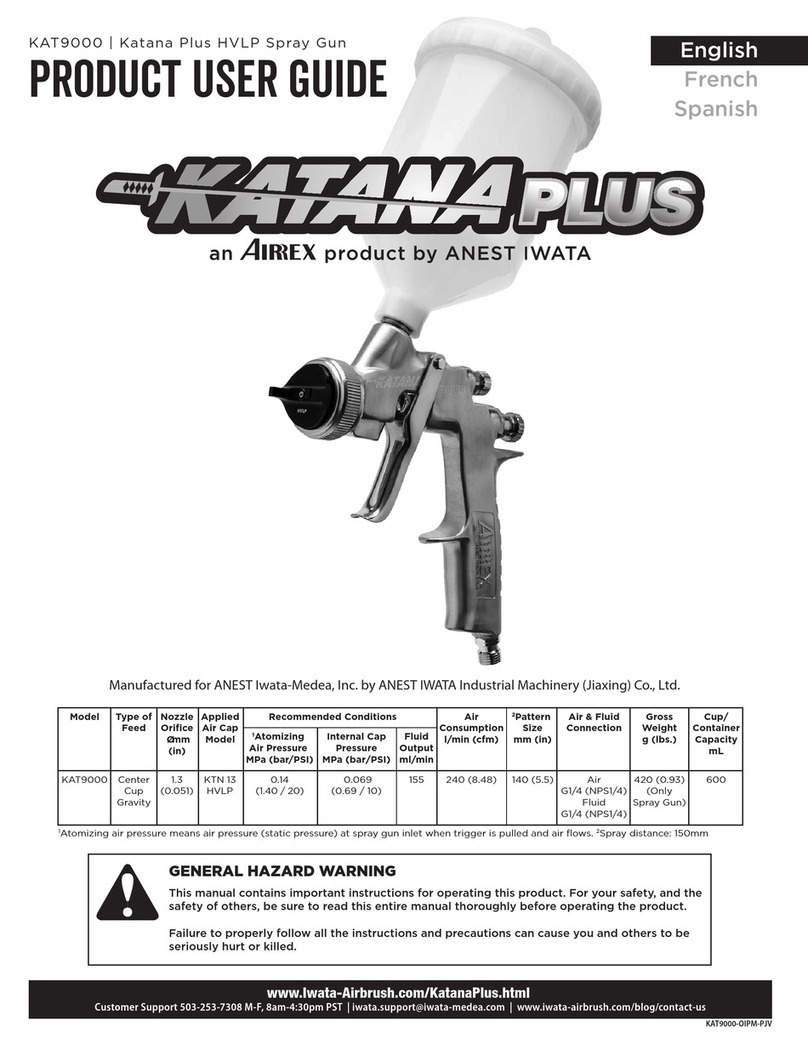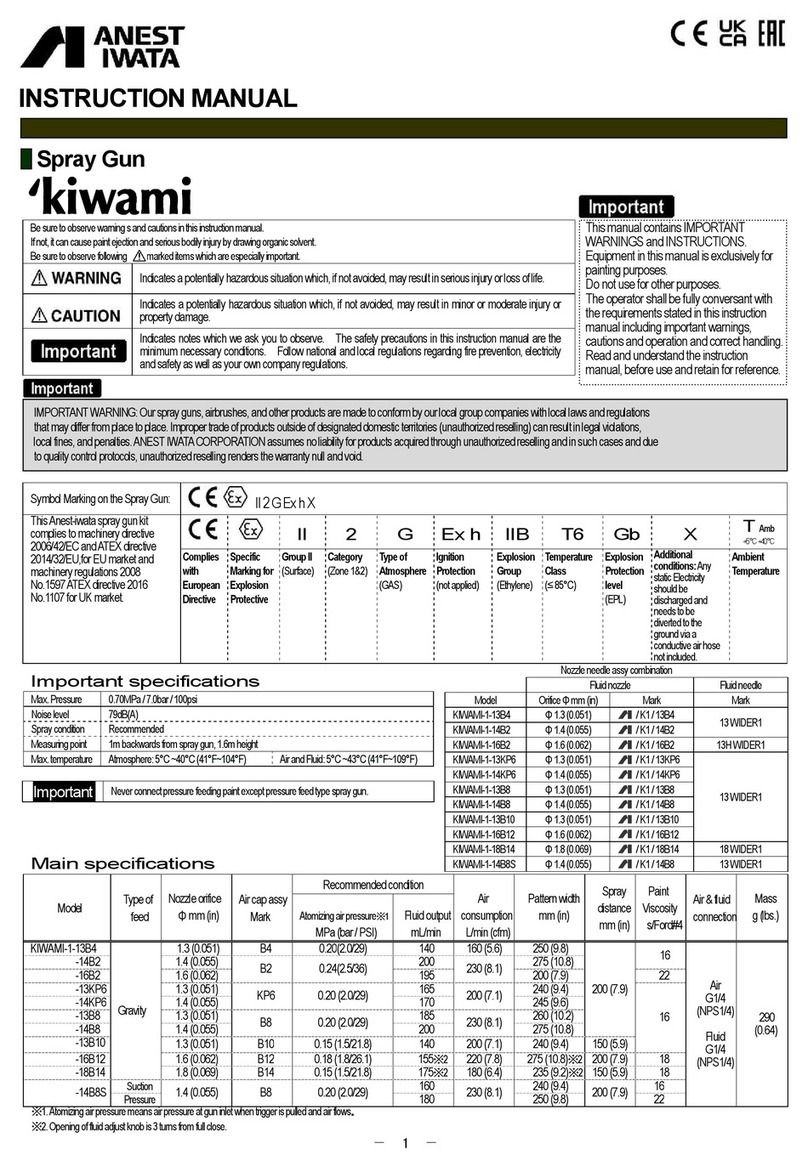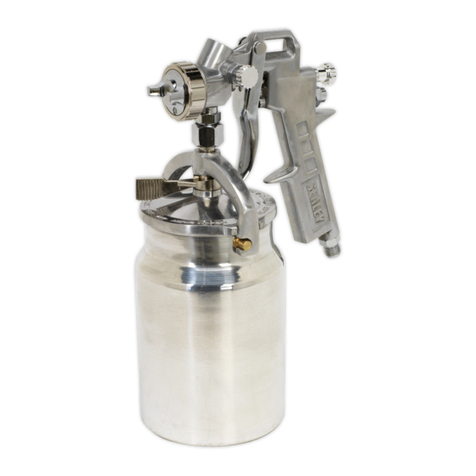
Page 2
• Refer to the chemical label to determine the chemical
mixture.
• See the tip chart to determine the pressure to be used. The
chart will also show the speed used when spraying.
• If the towing vehicle does not have a speedometer, speed
can be determined as per the directions.
Once you know how much you are going to spray then
determine(fromthetipchart)thesprayingpressure(PSI)and
the spraying speed (MPH). The pressure can be set by
running the sprayer with the boom nozzles “on”, and then
adjusting the relief valve until the gauge reads the desired
pressure. Notice that the pressure will go up when the boom
lines are shut off. This is normal, and the pressure will return
as before when you open the boom lines.
Whenselectingpressurefromthetipchart,itisagoodideato
tryforthe20or30PSIrangeasthisallowsanexcellentnozzle
pattern. 10 PSI begins to break up the pattern, and at 40 PSI,
you may notice some drift.
Conditions of weather and terrain must be considered
when setting the sprayer. Do not spray on windy days.
Protectiveclothingmust be worn in some cases. Be sure
to read the chemical label carefully.
Determining the proper speed of the towing vehicle can be
done by marking off 100, 200, and 300 ft. The speed chart
indicates the number of seconds it takes to travel the dis-
tances. Adjust the throttle until you travel the distances in the
number of seconds indicated by the speed chart. Once you
have reached the throttle setting needed, mark the throttle
location so you can stop and go again (returning to the same
speed).
The following situation is a typical spraying example.
The chemical label says to apply 1.2 gallons of solution per
1000 sq. feet. Looking at the tip chart you see that you can
spray1.18gallonsper1000squarefeetat30PSIand1MPH.
Let’ssaythatitisafairlystilldayandthegroundisrough.The
30 PSI and 1 MPH will be all right for this spraying situation.
After measuring off the 100, 200, and 300 feet distances,
prepare to make the trail runs. The speed chart lists the time
to be 68, 136, and 205 seconds. The sprayer does not need
toberunningatthistime.Itisbesttostartabout10feetahead
of the starting mark so you will be at the set throttle speed by
the time you reach the starting mark.
A stopwatch would be best to use for timing the travel but a
watchwith a secondhand can beused. Check eachdistance
separately.Bydoingthis youcancheckyourselfuntilthetime
is correct.
Once you have the throttle setting determined, mark the
setting so you can return to it each time you want to spray at
this rate.
When you are ready to spray mix chemical as follows. Add
proper amount of water to the tank. Run the sprayer while
addingchemical to thewater. Do notspray through theboom
at this time. This will allow solution to (bypass) return to the
tank.The movement ofsolution through thebypass will aidin
mixing the water and chemicals, but will not keep the chemi-
cals in suspension. An agitation system is needed for that.
WINTER STORAGE
Drain all water out of the sprayer paying special attention to
pump, valves, and spray gun. These items are especially
prone to damage from chemicals and freezing weather.
The sprayer should be winterized before storage by
pumping a solution of RV anti-freeze through the entire
plumbing. Proper care and maintenance will prolong the
life of the sprayer.
CAUTION: Never use a metal object or other sharp item
for cleaning a nozzle tip. It is better to use a nozzle brush
(not wire brush) or compressed air for tip cleaning.
Ground Speed Chart
Speed in M.P.H. Time Required in Seconds to Travel a distance of;
(Miles Per Hour) 100 ft. 200 ft. 300 ft.
1.0 68 136 205
2.0 34 68 102
3.0 23 45 68
4.0 17 34 51
5.0 14 27 41
6.0 11 23 34
7.0 9.7 19 29
8.0 8.5 17 26
9.0 7.6 15 23
10 6.8 14 20
Gallons Per Acre Based on Water - 20" Spacing
Pressure Capacity 1 MPH 2 MPH 3 MPH 4 MPH 5 MPH 7.5 MPH 10 MPH
P.S.I. G.P.M. 88 FPM 176 FPM 264 FPM 352 FPM 440 FPM 660 FPM 880 FPM
20 .14 41.8 20.9 14.0 10.5 8.4 5.6 4.2
30 .17 51.2 25.6 17.2 12.9 10.3 6.9 5.1
40 .20 59.2 29.6 19.8 14.9 11.9 7.9 5.9
50 .23 66.4 33.2 22.2 16.6 13.3 8.8 6.6
Gallons Per 1000 Sq. Ft. Based on Water - 20" Spacing
20 .14 .96 .48 .32 .24 .19 .13 .10
30 .17 1.18 .59 .39 .30 .24 .16 .12
40 .20 1.36 .68 .45 .34 .27 .18 .14
50 .23 1.52 .76 .51 .38 .31 .20 .15
Gallons Per 100 Sq. Ft. Based On Water - 20" Spacing
20 .14 .095 .048 .032 .024 .019 .012 .009
30 .17 .117 .059 .039 .029 .024 .015 .011
40 .20 .135 .068 .045 .034 .027 .018 .013
50 .23 .152 .076 .050 .038 .030 .020 .015
MPH = Miles Per Hour
FPM = Feet Per Minute
PSI = Pounds Per Square Inch
GPM = Gallons Per Minute
RATE CHART FOR 8002 SPRAY TIP
